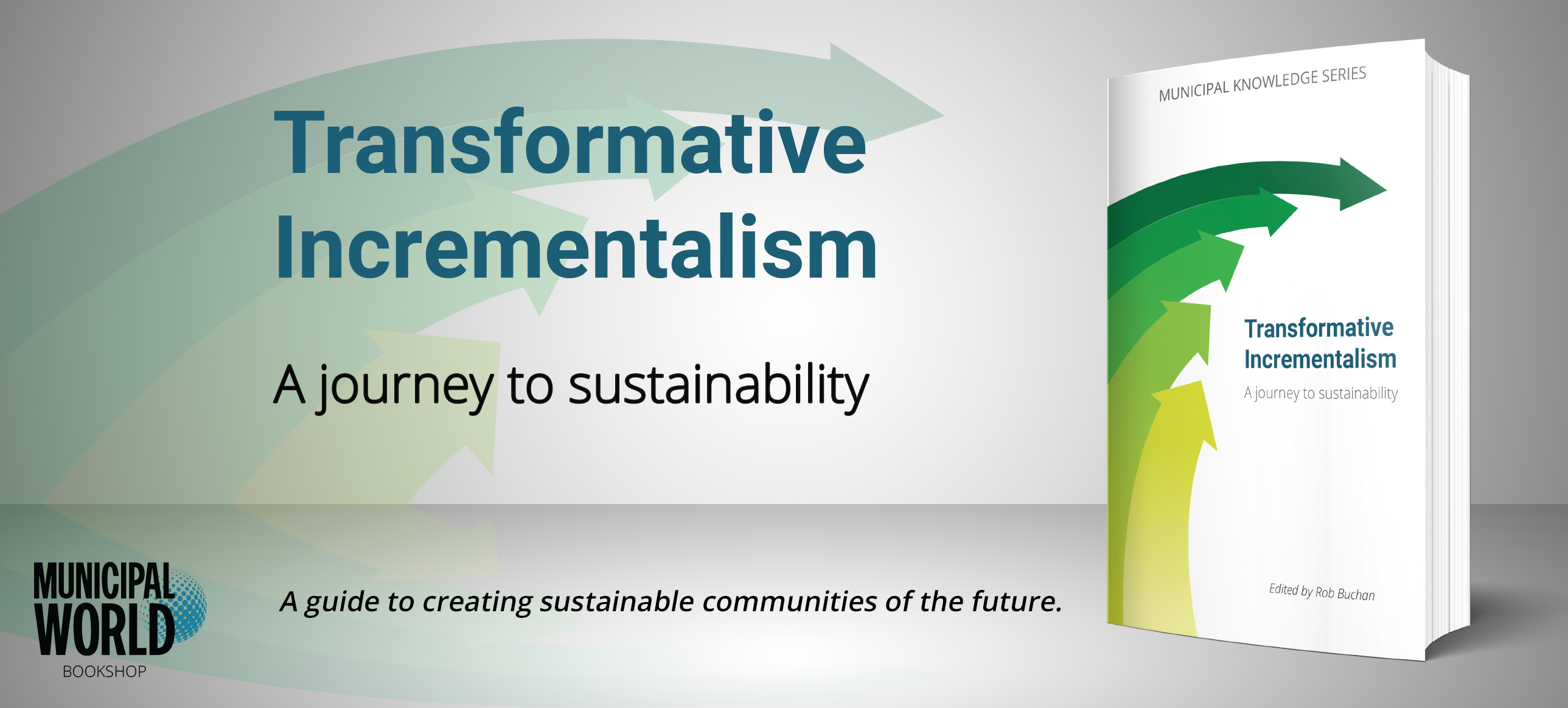Back to values

Strategically managing employee-to-employee (mis)conduct
Over the past several years, elected officials, executives, and senior managers of various local governments in Canada have expressed a high level of distress over complaints of employee-to-employee misconduct in their organizations.
Most often, there are concerns about worsening workplace behaviour that can trigger employee complaints, about the possibility of employees making frivolous and vexatious complaints against each other, and about the immense drain on time, money, and other resources that comes from dealing with employee-to-employee complaints. Not infrequently, these complaints are entwined with frustrations regarding the policies and processes intended to receive and address employee complaints – that they are overly bureaucratic, paternalistic, legalistic, and ineffective.
Of course, these concerns are not unique to local government. It is important for leaders of all organizations, including local governments, to consider them – after all, good leaders constantly stop to ask questions, and reflect on what is happening in their workplaces, in order to identify important trends – and identify corrective action where appropriate.
However, it is troubling when local government leaders latch on to such concerns without question, reflection, or examination. Individuals who wring their hands in angst over employee-to-employee complaints are often fixated on risk and risk avoidance, instead of the optimization of their organization’s performance. At best, these individuals see each complaint as a cost or a burden, rather than embracing each as an opportunity to foster alignment with critical organizational values that will drive enterprise performance; at worst, their focus on risk and risk avoidance leads these individuals to behave in ways that actually contribute to an increase in the number of employee-to-employee complaints.
This article explores the common concerns and frustrations of organizational leaders in relation to employee-to-employee complaints, and the limits of focusing primarily on risk and risk avoidance in any approach to managing them. Instead, leaders best serve their organizations through an uncompromising focus on aligning behaviours with core organizational values in service of mission, vision, and strategic objectives. Such a focus offers collateral benefits of reducing both the frequency and impact of employee-to-employee misconduct.
Worsening Behaviour, More Often?
“I can’t believe the sorts of things that people say and do toward each other these days. I wouldn’t expect to see these behaviours in a kindergarten class, let alone among a group of adults in a workplace! These things never would have happened when I first started working.” – HR Director in B.C.
Many local government leaders suggest they are concerned that a rise in workplace misconduct underlies the increase in employee-to-employee complaints in their organizations. Their worry is that employees are behaving badly more often and in more significant ways than in the past, and that this reflects the disintegration of social norms in their workplaces, or even the broader community.
Are employees actually engaging in misconduct more frequently in the modern workplace? Are workplace behaviours worse now than they used to be?
Arriving at conclusive answers is difficult. Numerous research studies exist that purport to measure the rates and significance of workplace misconduct; however, it can be extremely difficult to arrive at any unequivocal conclusion that misconduct is actually increasing or worsening over time. There are few studies that track and compare data on workplace misconduct over extended periods. Differences in research methodologies make it hard to compare results across studies. Also, unless a study is very rigorously structured, the resulting data is just as likely to reflect changes in awareness and reporting, as it is to track actual rates of change or significance.
Further, statistical analysis yields conclusions that are valid in relation to a population as a whole, not necessarily to all individuals within that population. For instance, were a study of all local governments to conclude that workplace misconduct had, in fact, declined across the population of all local governments, that conclusion would not eliminate a temporary spike – or even a prolonged increase – in misconduct in one specific local government.
For leaders who are concerned about the realities of their own workplaces, it is therefore unhelpful to focus on arguments about changes across society, or local governments generally, in terms of the frequency or significance of employee-to-employee misconduct.
At the same time, the experiences of different stakeholders suggest a major shift in awareness of changes in legislation, regulation, and policy amongst employees. For instance, lawyers and organizational leaders in both B.C. and Ontario report seeing formal complaints of employee-to-employee bullying and harassment increase as much as two-fold in local governments since the enactment of occupational health and safety regulations that allow for injury claims relating to bullying and harassment.
“From our work with different employers, it seems pretty obvious that the past decade has left employees with greater awareness of their rights, and employers with an awareness of their increased exposure for employee-to-employee misconduct,” says lawyer Sandra Guarascio of Roper Greyell, a leading employment law firm in B.C. “Occupational health and safety legislation has broadened the scope of potential bullying and harassment claims by employees in many jurisdictions and has increased the requirements for addressing such conduct in workplaces. Our local government clients are seeing the results of these changes.”
Vexatious Complaints
“People can take every little thing personally, get ‘hurt feelings’ over anything, and then make a formal complaint that leaves us embroiled in investigations and mediations for months – over essentially nothing. We end up pandering to these individuals.” – General Manager of Public Works in Manitoba
Some leaders are concerned with the irrationality, unreasonableness, and unfairness of the complaints they receive; they believe that the system may be evolving in ways that increasingly allows querulous employees to hold organizations hostage by unwarranted complaints.
If there has indeed been an increase in employee awareness regarding employee-to-employee misconduct and a simultaneous increase in the number of related complaints, doesn’t it make sense to wonder just how many cases are due to people simply whining, leveraging processes to “game the system,” or worse, to victimize others? Are we giving so much voice to the “squeaky wheels” in our workplaces that employees are losing their perspective and resilience in relation to normal social bumps and bruises?
At their root, such questions imply a concern that complaints are inherently problematic because of difficulty the employer faces in determining which ones are worthy of attention. From this perspective, employers should only have to attend to complaints that are “valid.”
While it seems difficult to make an authoritative statement about the frequency of vexatious complaints, every misconduct complaint warrants attention. This is not because every complaint is conclusive that misconduct has occurred. Rather, every complaint is an indicator that at least one of the following problems exists.
There is misconduct – The complainant is honestly raising a concern about another employee’s behaviour that is factually correct.
There is dishonesty – The complainant is knowingly and intentionally misrepresenting the facts in complaining about another person.
There is a misapprehension of critical facts – The complainant is honestly raising concerns that are factually erroneous, due to mistake, or perhaps even to a distorted sense of reality.
No matter which is true, the complaint itself can be hugely valuable in surfacing a problem that is affecting the relevant workgroup in one form or another.
Typically, when someone takes the time to file a complaint, significantly more time and productivity has been lost due to the drag in relationships or time spent focusing on perceived harm. When an employee brings forward a claim, consider it an opportunity to address underlying conduct that may otherwise never have come to the surface. In the rare instance that the same employee launches multiple unfounded or vexatious complaints, you now have the opportunity to use performance management tactics.
Drain on Resources
“We’re spending more and more of our time and money trying to sort out issues between people … and getting less and less of the work done!” – HR Manager in Saskatchewan
The impact that complaints of employee-to-employee misconduct have on organizational budgets and deliverables are yet another common concern of leaders in local government. They worry about being forced to make a fundamental reallocation of internal resources, one that actually detracts from their organizations’ capacity to do the “real work” of delivering infrastructure and services into their communities.
The time, effort, and money involved in grievances and workplace investigations are just two examples to which leaders can legitimately point. Certainly, it is not unusual to hear of even simple grievances costing local governments between $15,000 and $35,000 in combined direct and indirect costs, and significantly more in complex cases; simple workplace investigations involving external investigators can run from $20,000 to $40,000 in combined direct and indirect costs.
“With Bill 132 coming into effect this September, employers in Ontario will face an additional pressure to ensure that their workplace investigations are conducted appropriately,” says Shana French of Sherrard Kuzz. “In many cases, particularly for smaller employers who may not have the internal expertise or resources necessary to facilitate these investigations, this will likely result in an increased reliance on external investigators and, accordingly, an increased cost.”
Similar concerns arise in relation to both the direct and indirect costs of workforce training intended to prevent employee-to-employee misconduct, as well as associated complaints, investigations, and grievances – even when the training is done using internal resources.
Focusing on Risk Is Risky
Given the above, it is perhaps not completely unexpected that some leaders react to individual complaints of employee-to-employee misconduct with a focus on risk and risk avoidance. This, in turn, can lead to the development of a “litigation mindset” that can ultimately contribute to the frequency and significance of such complaints.
“It is not uncommon that, at the start of a case, the leaders of an organization will feel strongly that they need to ‘fight’ complaints on the basis of principle, or out of a concern that any other response will lead to the floodgates opening and additional claims being filed,” says French.
This reflexive response can often be seen in organizations that struggle with a history of poor relationships with their staff or unions. Typically, the proliferation of individual complaints is the result of fighting individual complaints, case by case, instead of recognizing and addressing the systemic challenges contributing to the workplace tensions.
The effect is exacerbated when politicians, executives, and senior managers – sensitive to the complexities and risks of employee-to-employee complaints – become hypervigilant. This can manifest in over-attentiveness to individual cases at a tactical level and decision making based on a fear of losing or “getting it wrong.”
French asserts, “There are certainly some cases that do need to be litigated; but, in most situations, the best result for all parties involved is to try to reach a resolution. In those cases that do need to be litigated, the smart organization learns from the process to put themselves in the best position to avoid future litigation, if possible.”
The legalistic mindset ultimately results in a bureaucratic “check the box” approach to managing behaviour at a preventative level, one that invites inattention until behaviours have escalated to legal definitions of “bullying” or “harassment,” the team’s productivity has reached critical lows, or someone has launched a formal complaint.
The Alternative: Focus on Excellence
Best practices in the strategic management of an organization’s behavioural culture demands that leaders not wait until they are concerned that behaviour may satisfy the definition of “bullying” or “harassment” under policy, laws, or regulation.
Instead, leaders must foster an uncompromising demand for excellence across the organization. From this perspective, any behaviour that is not aligned to the organization’s core values, or that impedes performance at the individual, team, or enterprise level as defined by mission, vision, or strategic objectives, deserves attention. This sets standard best practices driving organizational excellence. This, in turn, demands that you identify and address any behaviour that affects the consistent, ongoing achievement of the organization’s mission, vision, values, and strategic objectives.
Such an approach creates an early warning system that has the potential of nipping problem behaviours in the bud in a timely manner in the majority of cases.
And, in keeping with this higher-level, more strategic, and values-based approach, leaders would be well advised to avoid getting too wrapped up in tactical considerations in order to “win” when individual complaints of misconduct do arise. Instead, leaders should embrace the surfacing of each allegation of misconduct as an opportunity to further the establishment of a behavioural culture focused on outcomes of organizational excellence as defined by mission, vision, and strategic objectives.
“While it can be much easier these days for an employee to bring forward a claim,” says Guarascio, “this can be an opportunity for employers to address underlying conduct that may otherwise never have come to the surface. The proactive measures that employers can take, including establishment of respectful workplace skills and awareness training, implementation of behaviour support programs, and managing with respectful workplace values in mind, can have very positive impacts on workplaces by improving morale and productivity while also demonstrating due diligence in the event that a complaint does escalate into some form of litigation.”
At its essence, such an approach is essentially a learning approach, one in which each case is seen to allow for achieving greater alignment of behaviours with core organizational values, as well as with policies and procedures, furthering the enterprise’s success. MW
Richard D. Hart is a Founding Director of ProActive ReSolutions Inc., a leading international consultancy that works with public and private sector organizations around the world to create respectful workplaces, including Fortune 500 companies and many municipal governments. Richard’s passion is working with groups embroiled in intense conflict, and he has extensive experience in helping to prevent and manage extreme behaviours, including harassment, bullying, and threats of violence.
as published in Municipal World, October 2016



